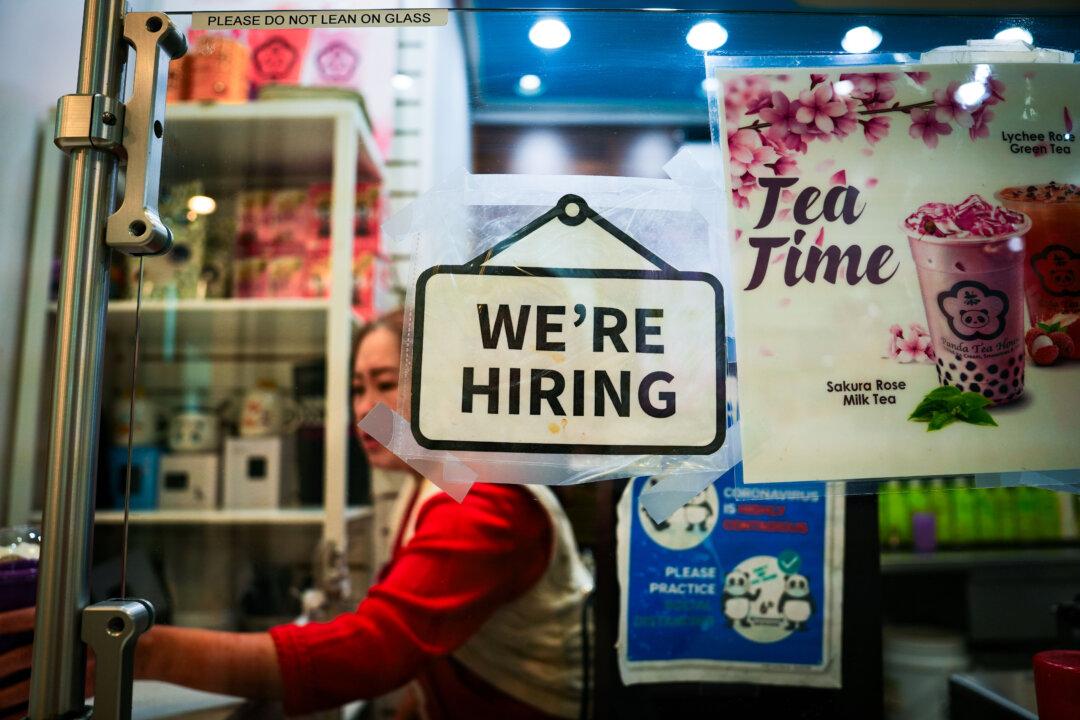China’s Producer Price Index (PPI) fell for the eighth straight month in May, fortifying concerns about the economy slipping into a deflationary situation.
Data from China’s National Bureau of Statistics show that the country’s PPI for May declined by 4.6 percent year over year, according to Reuters. This is the eighth consecutive monthly decline and the fastest fall since February 2016. PPI measures inflation from the viewpoint of producers. This is in contrast to the Consumer Price Index (CPI), which measures inflation from the viewpoint of consumers. The continuous decline in PPI has some experts worried about the possibility of deflation.
Deflation is the general decline in the prices of goods and services, and typically is associated with a contraction in money supply and credit.
“The risk of deflation is still weighing on the economy,” Zhiwei Zhang, chief economist at Pinpoint Asset Management, said in a note, according to the outlet. “Recent economic indicators send consistent signals that the economy is cooling.”
Back in March, Zhao Jian, the founding dean of the Xijing Institute, a wholly owned subsidiary of Atlantis Capital, warned in an article that the biggest challenge facing China was deflation, and that a drop in prices is not a favorable situation for the country’s middle and lower classes.
Deflation in China
Though China’s GDP growth gathered pace during first quarter 2023, the risk of deflation continues to weigh down on the economy. “China is entering an ‘atypical’ deflation cycle, which means deflation amid economic recovery,” Jinyue Dong, senior economist at BBVA research, said to Reuters in April.As PPI falls and CPI growth slows down, the People’s Bank of China (PBC), the communist regime’s central bank, faces more pressure to either reduce interest rates or pump in more liquidity into the financial system. However, as demand is not picking up, some believe engaging in these actions may not contribute to stimulating the economy.
During an interview with The Epoch Times in March, Shi Shan, a China expert and current affairs commentator, pointed out that Beijing’s money-printing efforts have not been helpful for small and medium businesses.
While production costs rise and consumer demand remains weak, businesses are struggling, fearing to even raise prices. Meanwhile, people are afraid of spending money as their incomes have remained stagnant.
Shi predicts a further decline in demand. By then, the businesses “will be forced to reduce production scale and output.”
“The subsequent layoffs and salary cuts in various industries will lead to a drop in household incomes, and consumers will become more pessimistic about the future and more conservative in spending,” Shi said, while adding that PBC’s quantitative easing this year will not have much of an impact on inflation.
Inflation Situation of China and the US
China’s PPI deflation has happened while its CPI growth has largely cooled down. CPI grew by 0.2 percent year over year in May, up from a 0.1 percent increase in April. Food Price Inflation, a key contributor to the CPI, grew by 1 percent in May, which is a slower increase compared to the 2.4 percent increase in April.China’s PPI deflation and relatively low CPI is in stark contrast to other major global economies that have been battered by elevated inflation. In the United States, for example, the Federal Reserve has been raising interest rates for a year in its attempt to bring down inflation.
Inflation in the United States was at 4.9 percent in April 2023. Though it has almost come down from the record 9.1 percent in June 2022, inflation still is more than double the Federal Reserve’s 2 percent target rate.
To bring down inflation, the Fed has pushed up its benchmark interest rate from around 0.5 percent in April 2022 to a range of 5.0–5.25 percent in its May 2023 meeting, bringing borrowing costs to their highest level since September 2007.





